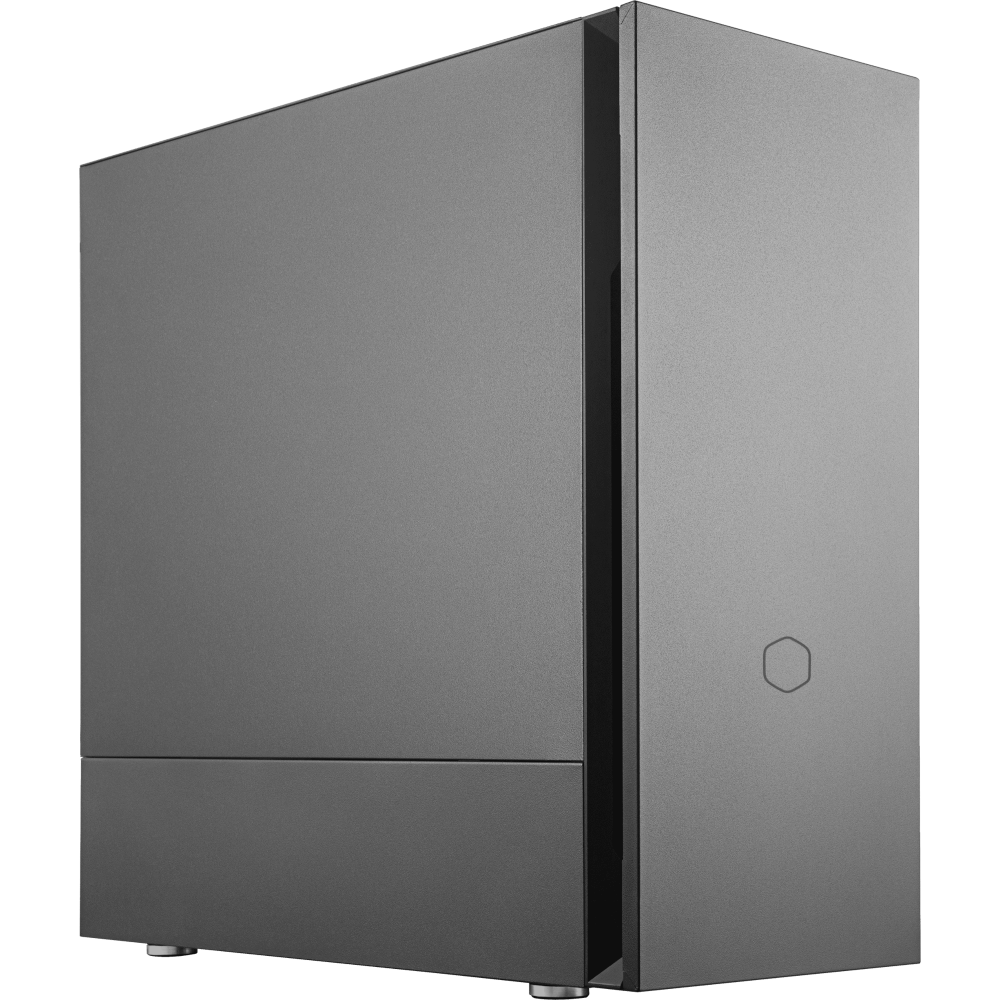What kind of processor do I need for Adobe Photoshop CC and Lightroom CC in 2023?
What kind of processor do I need for Adobe Photoshop and Lightroom. A 2023 guide to CPU performance and photo editing.
Cores and Threads
Most people think of the processor in your computer as its brain but I like to think of a modern processor being more like a factory. You have data going in, some work being undertaken to that data in the processor via some calculations giving some output. The faster it can undertake calculations, the faster your computer will feel to use and the faster it will be able to complete the set tasks. Modern processors are divided into a number of processor cores. One processor core is essentially like one factory production line. By adding more cores, it is possible to undertake the same process in parallel many times over and get more output from your factory. Processor cores are quite versatile, they can undertake entirely different tasks or they can all undertake a portion of the same task.
Some tasks are easy to divide out amongst many processor cores but other tasks are more difficult and only work with one processor core. We refer to these tasks as being single threaded (only works on one core) or multi-threaded (works on many cores in parallel).
Processor clock speed explained
A processor Clock speed is usually measured in GHz (billions of pulses per second). Each pulse represents the ability of the processor to perform an instruction or part of an instruction. Usually, the faster the processor clock speed, the faster it will undertake a given task. Photoshop performance scales directly with processor clock speed. Some processors also include a feature called Turbo Boost. This refers to Intel Turbo Boost Technology which will try to increase the clock speed of the processors cores where safe to do so.
Intel® Turbo Boost Technology accelerates processor performance for peak loads, automatically allowing processor cores to run faster than the rated operating frequency if they’re operating below power, current, and temperature specification limits. Whether the processor enters into Intel® Turbo Boost Technology and the amount of time the processor spends in that state depends on the workload and operating environment.
To maximise performance under Turbo Boost, the majority of our photography systems use a high performance CPU cooler. Regular CPU coolers won’t allow the CPU to operate under Turbo speeds for long before reaching maximum temperature.
Photoshop with multi core processors
If the computer is mainly used for Photoshop and Lightroom it is important to understand how efficiently these applications cope with multi core processors. In order to understand this, we have undertaken testing using a range of processors from quad core right through to the huge 24 core variants. We were quickly able to conclude that both Photoshop and Lightroom are not able to take advantage of a great number of processor cores. Other applications such as On1 Photo Raw and Topaz Photo AI make better use of multi core processors.
There are some exceptions as certain effects will have a small benefit given additional cores. On average however, we can conclude that it would be more beneficial to use a processor with fewer cores but higher processor frequency. The performance of the processors scale in a linear fashion with increased processor frequency. Modern processors tend to provide high core counts along with high processor frequency but where there is a desire to keep costs down, it will often be better to choose a top of the range Core i5 with high clock speed than an entry i7 which may have lower clock speed but more cores.
The best efficiency is gained from six core processors. We understand that most users will likely have other applications such as email, web browsers and various background tasks operating at the same time. Moving to a 10 core processor will effectively give the user 4 spare cores to run other applications and 10 core parts usually have a higher clock speed too. The only reason to consider a higher core product is due to a higher CPU clock speed usually present on these CPUs. Also pay attention to the CPU model numbers as they indicate the age of the item. At time of writing this article, Intel are on to their 13th generation processors so all these part numbers begin with 13. The i7-13700K for example is their 13th generation i7 and with each generation there are improvements and efficiencies in the CPU cores which make them faster than the previous generation. The improvements for photography use can be over 10% per generation so be wary of bargains on older gen chips.
A performance photography PC requires a processor able to handle the multitude of Photoshop actions and effects quickly and efficiently. Photoshop can efficiently utilise multiple processor cores, but efficiency drops off after two cores, with the four-core processor only being around 25% faster than the two-core at the same clock speed. The six-core processor is approximately 8% faster than a four-core.
Performance in Photoshop does improve directly with increases in processor clock speed, the higher, the better. Also the newer the generation of the CPU, the better. It is, therefore often better to utilise a newer generation Core i3 rather than an older core i5 processor if budget is limited. If you use the PC for a variety of tasks including video editing and image processing, you may still benefit from higher core counts from the other applications.
The below is a list of relative performance in an average of 10 common Photoshop effects and processes; benchmarked to the Core i9-13900KS processor:
| CPU | CPU Performance |
| Intel Core i9-13900KS | 100% |
| Intel Core i9-13900KF | 97% |
| AMD Ryzen 9 7950X3D | 97% |
| AMD Ryzen 9 7950X | 97% |
| Intel Core i9-13900F | 91% |
| AMD Ryzen 9 7900X | 86% |
| AMD Ryzen 9 7900X3D | 84% |
| AMD Ryzen 9 7900 | 83% |
| Intel Core i7-13700KF | 82% |
| Intel Core i7-13700F | 77% |
| Intel Core i9-12900KF | 75% |
| AMD Ryzen 9 5950X | 73% |
| Intel Core i5-13600KF | 73% |
| AMD Ryzen 7 7700X | 72% |
| Intel Core i9-12900F | 71% |
| AMD Ryzen 7 7700 | 69% |
| Intel Core i7-12700KF | 68% |
| AMD Ryzen 9 5900X | 67% |
| Intel Core i5-13500 | 66% |
| AMD Ryzen 5 7600X | 64% |
| Intel Corei7-12 700F | 64% |
| AMD Ryzen 5 7600 | 61% |
| Intel Core i5-12600KF | 61% |
| Intel Core i5-13400F | 57% |
| AMD Ryzen 7 5800X | 57% |
| Intel Core i9-11900KF | 55% |
| AMD Ryzen 7 5700X | 55% |
| AMD Ryzen 7 5800X3D | 54% |
| Intel Core i7-11700KF | 53% |
| AMD Ryzen 7 5700G | 52% |
| Intel Core i5-12500 | 52% |
| AMD Ryzen 5 5600X | 50% |
| Intel Core i5-12400F | 50% |
| Intel Core i7-11700F | 49% |
| AMD Ryzen 5 5600 | 49% |
| Intel Core i5-11600KF | 48% |
| Intel Core i3-13100F | 48% |
| AMD Ryzen 5 5600G | 47% |
| AMD Ryzen 5 5500 | 45% |
| Intel Core i3-12100F | 45% |
| Intel Core i5-11400F | 43% |
| AMD Ryzen 5 4600G | 38% |
| AMD Ryzen 5 4500 | 38% |
| AMD Ryzen 3 4300G | 33% |
| Intel Core i3-10105F | 32% |
Why don't we use AMD Ryzen processors in our high end photography systems?
AMD have made some fantastic advances in their technology over the last few years. The recently launched AMD Ryzen 7000 generation processors are a significant step forward versus the earlier Ryzen and are now well worth considering. AMD’s focus has been on offering higher core count processors v their Intel rivals but the performance per core of an AMD processor is still very slightly behind that of Intel and the motherboards are more expensive. For this reason, we find they miss out of the best price / performance calculation we use when working out our range specs.
There is a clear exception to this rule however when we consider the Ryzen 3 4350G and Ryzen 5 5600G processor. We use these in our Entry Photography PCs as they offers exceptional value for money. The CPU performance of the 5600G is similar to that achieved by the Intel Core i3-12100 yet the AMD product also includes a very capable graphics solution which performs somewhere between the GT1030 and GTX1050 GPU. If you have a very tight budget, this is an excellent choice.
The downside of utilising a processor with integrated graphics solution is that both the processor and GPU share the computers main system memory. Not only does this consume valuable memory for graphics use but it eats up memory performance bandwidth too. So while this system offers superb performance when dealing with relatively small image sizes (less than 15mp), performance soon drops off when handling larger and more complex image workloads.
SKU: 5060506946832
- Cooler Master Silencio S600 Case
- Intel Core i5-12600KF 3.7/4.9GHz 10 Core, 16 Thread CPU
- Gigabyte Z790 GAMING X AX DDR5 Motherboard
- NVidia GeForce RTX 3050 8GB GDDR6 LHR GPU
- 32GB Corsair Vengeance DDR5 5200MHz CL40 (2x16GB)
- 480GB NVMe M.2 SSD (3500MB/R, 2100MB/W)
- 1TB NVMe M.2 SSD (3500MB/R, 2100MB/W)
- 4TB Seagate BarraCuda 3.5″ Hard Drive
- Be Quiet! Pure Loop 2 240mm Liquid CPU Cooler
- Contour 650W High Efficiency ATX PSU
- Built in Wi-Fi and Bluetooth
- 24x SATA Internal DVDRW
- Built in 5.1 Sound Card
- Microsoft Windows® 11 Home




